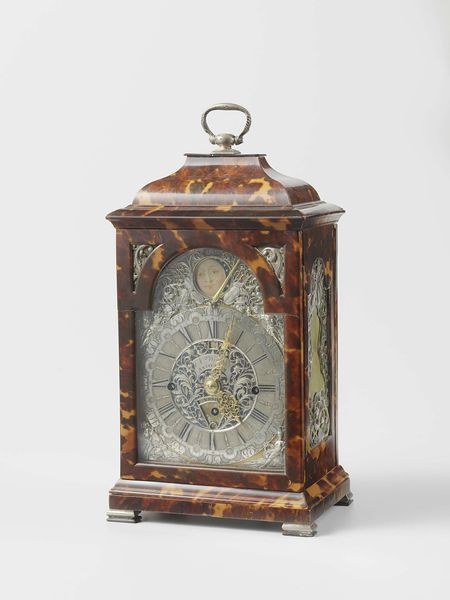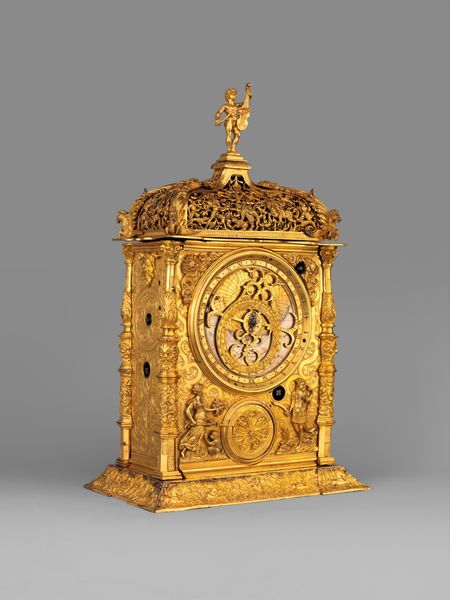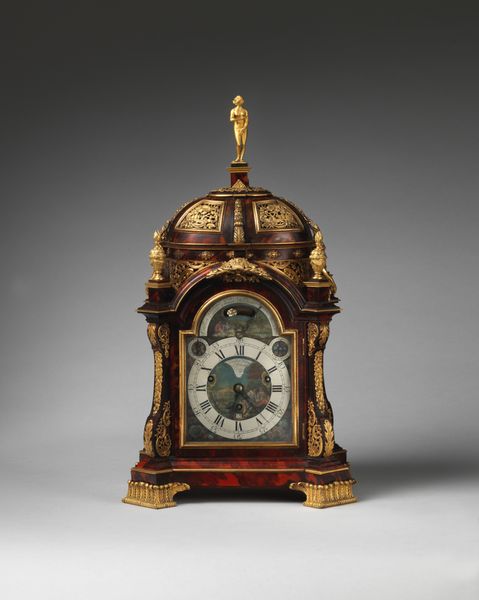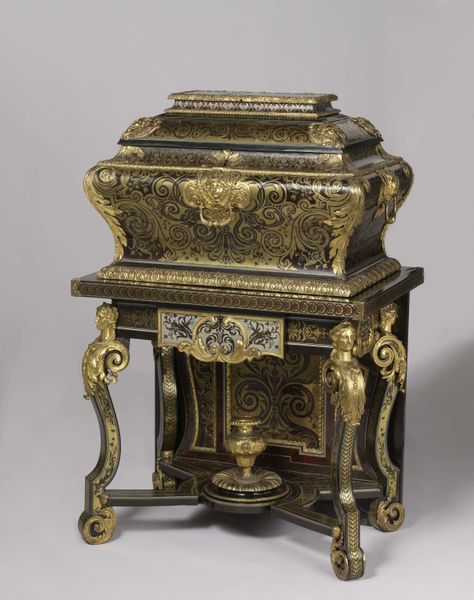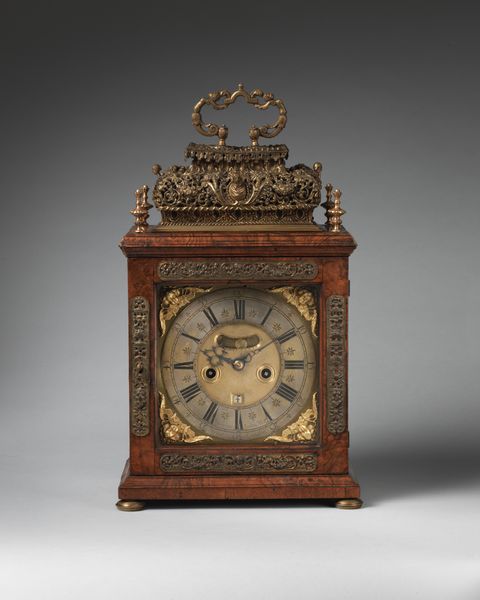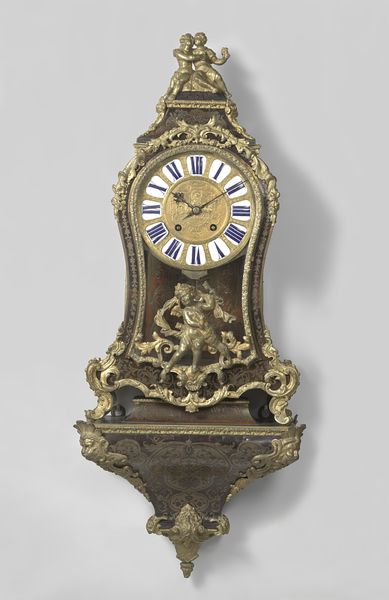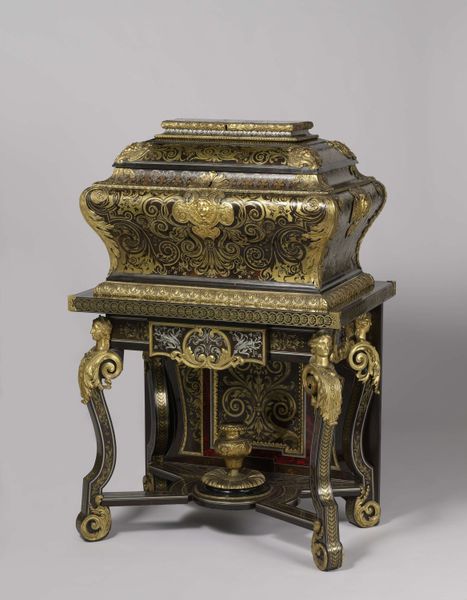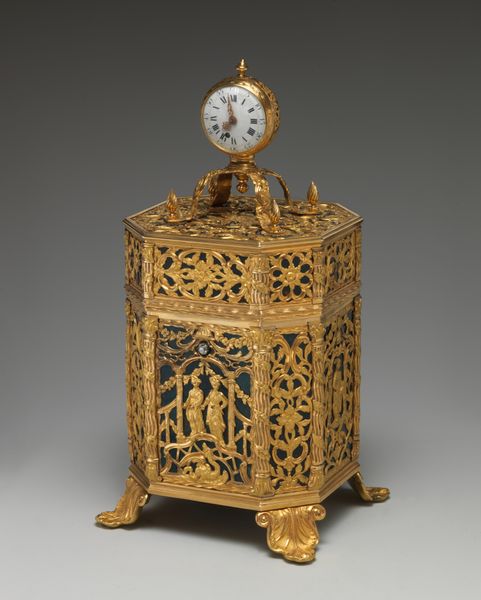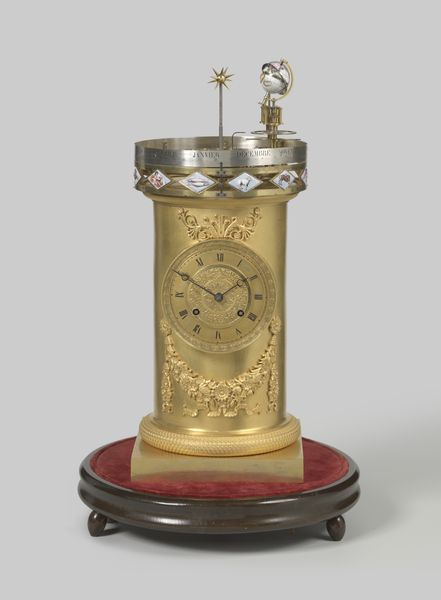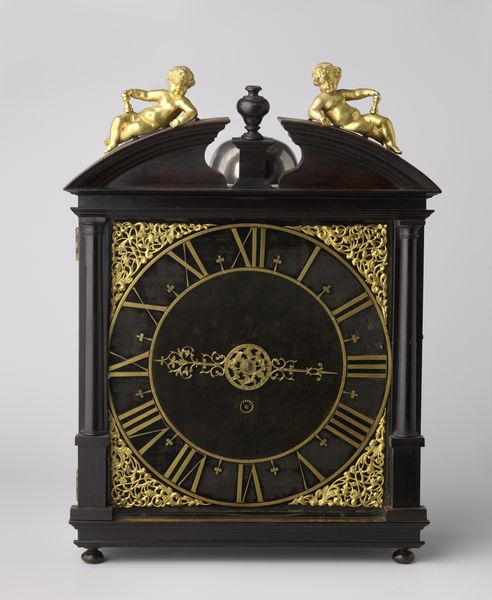
carving, relief, sculpture, marble
#
carving
#
baroque
#
dutch-golden-age
#
sculpture
#
relief
#
sculpture
#
decorative-art
#
marble
Dimensions: height 83 cm, width 45 cm, depth 46 cm, weight 20 kg
Copyright: Rijks Museum: Open Domain
François Dieussart created this pedestal for a statue of Prince William II likely around the mid-17th century, using materials such as marble and possibly other stones. The pedestal strikes a balance between classical form and heraldic display. The vertical emphasis and clean lines give it a sense of stability, while the choice of marble, with its natural patterns, introduces an element of the unpredictable. This tension between control and chance is further complicated by the addition of the coat-of-arms. Framed by an oval, the heraldic symbols present a codified system of signs, each element meticulously placed according to the rules of heraldry. How does this pedestal function? Is it merely a base, or does it actively participate in the creation of meaning? By combining classical forms with symbolic language, Dieussart invites us to consider how power and identity are constructed and displayed. The pedestal becomes more than just a support; it is an active participant in the theater of representation.
Comments
No comments
Be the first to comment and join the conversation on the ultimate creative platform.
